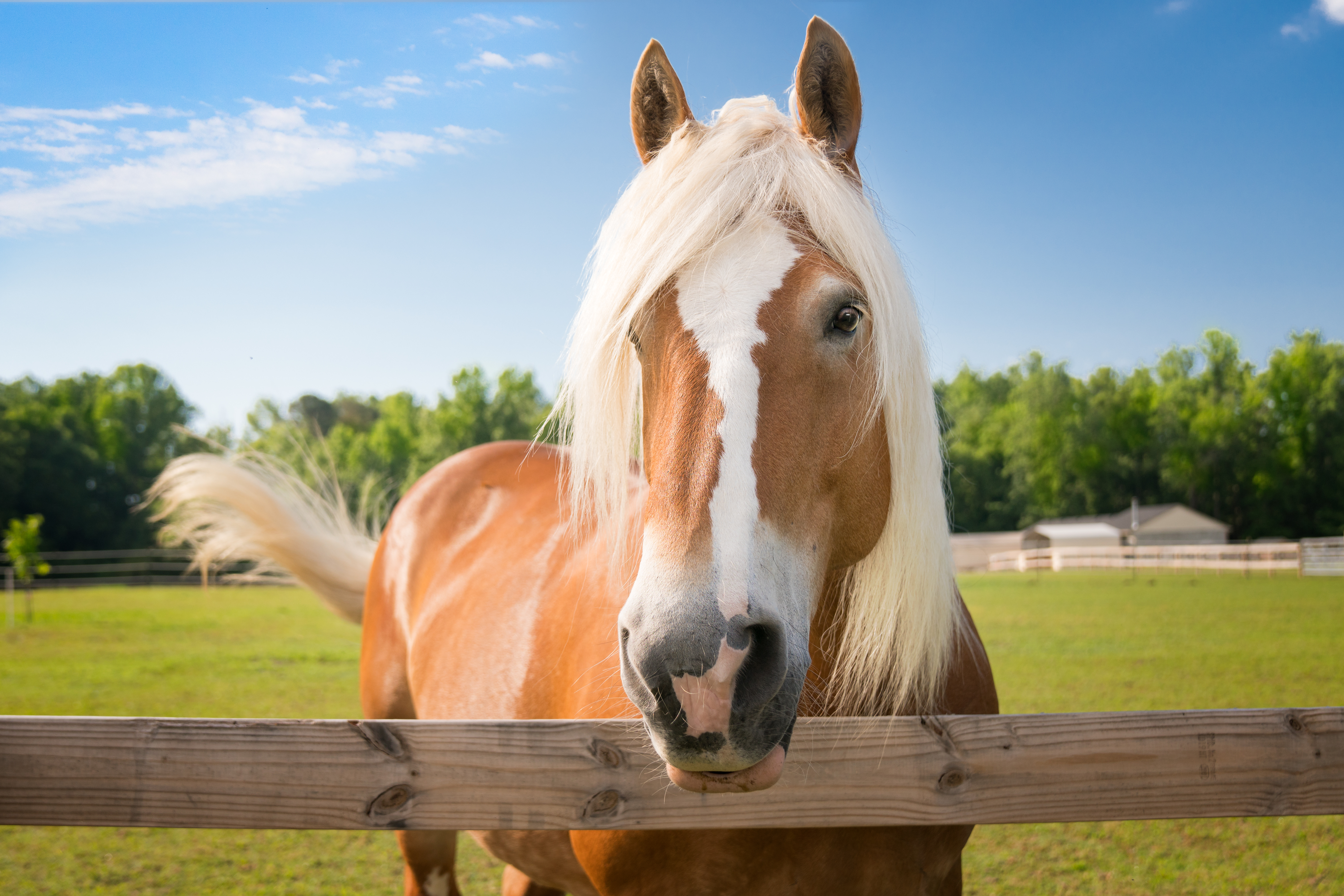When your horse looks at you from across the paddock and tosses his head, he may be trying to tell you something.

It has long been known that dogs sometimes interact with people using “functional referential communication,” gesturing to direct a human’s attention toward a third entity (such as an object, person or location) in pursuit of a goal. For example, a dog might use his gaze in an attempt to get a person to retrieve a toy from a shelf. New research suggests that horses are also capable of this type of communication.
For a study conducted cooperatively by the School of Ethical Equitation (SEE) in Italy and the University of Vienna in Austria, 14 horses were led one at a time into a small paddock where two buckets, containing a random selection of oats, carrots or apples, were placed or held on the opposite side of a gate. Each horse was then released and could choose one of the two buckets, but it had no access to it. “We recreated a set of conditions where horses would need to communicate to a human observer the location of the desired target out of reach. In each experimental condition, we varied the attentional state of the observer or the availability of the observer to test whether horses adjusted their communication accordingly,” says Rachele Malavasi, PhD.
Click here to learn how to read equine body language.
The four set conditions (each repeated three times a day) were as follows: (1) the handler remained in the arena oriented toward the buckets (baseline condition); (2) the handler turned her back to the buckets and the horse; (3) the handler walked away; (4) two volunteers held each bucket outside the distant gates while the handler was oriented toward the buckets.
Each horse’s reaction to each situation was videotaped and later analyzed. “A series of conditions has to be met to classify a communicative attempt as intentional,” says Malavasi. “The horse must alternate its gaze between the handler (to make sure of visual contact) and the bucket (to convey her attention toward it); it must use some attention-getting behavior (such as stomping a foot, bobbing the head or twisting the tail); these signals must be used only if the handler is present and only if it makes sense to use them—for example, not using visual signals if the handler had her back turned (condition 2) or walked away (condition 3) and therefore could not see them. Finally, the horse must elaborate its strategy if it doesn’t work.”
The data revealed that horses did, indeed, attempt to communicate with their handlers—or any attentive humans—seeking help in reaching the bucket. In the trials where other volunteers were holding the buckets (condition 4), the horses “asked” them for help instead of the handler. “When more ‘reliable’ helpers were present—that is, closer to the bucket and paying full attention to the horse—most horses chose to ask them for the food, instead of mechanically repeating the gaze alternation pattern with the handler. This means that gaze alternation was not a fixed pattern but rather it was used to communicate the goal.”
Malavasi adds that some horses were more communicative than others. “Some used very subtle signals, only slightly twisting their tail or bobbing the head to get the attention of the handler,” says Malavasi. “Others got rapidly mad if not being listened to, would tighten their lips and seemed to increase the rate of signaling. Some would come back to the handler and pester for action by touching or pushing her. Interestingly, the horses that came back to the observer were not necessarily those that appeared more ‘talkative.’ It gave me the impression that, even if their signals appeared subtle to us, these horses were certain they did their best to communicate their need and were playing the last card by coming back to the observer.”
Knowing that horses use this form of communication is important in our everyday interactions with them, says Malavasi: “It is probable that, in our stables, horses are trying to tell us what they need but we are not able (or willing) to read their bodily communications. A horse alternating its gaze between a gate and us probably wants to have access to the other side of the fence. Head bobbing and tail twisting may signal, among other things, a discomfort that the horse is trying to communicate to us. We need to observe our horses better and learn to read their bodily communication. Sadly, it may also be that a horse is communicating nothing because it gave up, so be attentive.”
Don’t miss out! With the free weekly EQUUS newsletter, you’ll get the latest horse health information delivered right to your in basket! If you’re not already receiving the EQUUS newsletter, click here to sign up. It’s *free*!
This article first appeared in EQUUS issue #467








